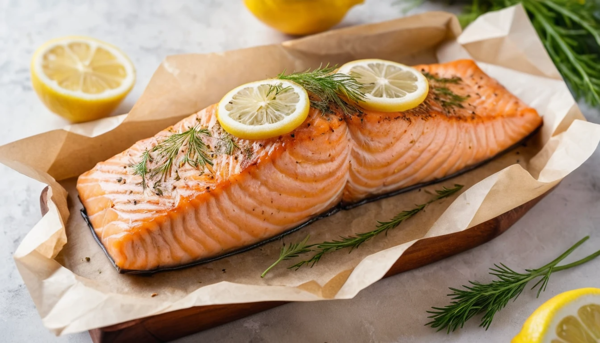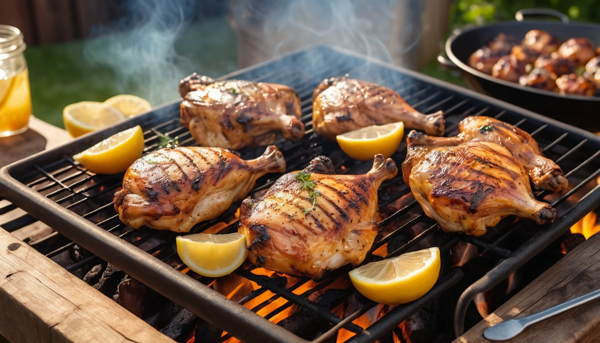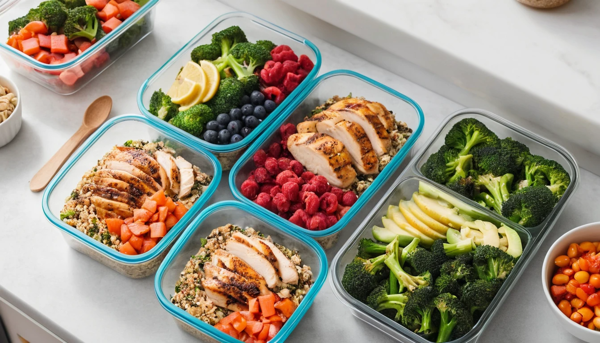How to start a small food business from scratch—learn step-by-step strategies, costs, permits, and tips to launch your dream food venture fast.
To start a small food business, you’ll need a solid plan, proper licenses, reliable suppliers, and a smart marketing strategy. Begin small, focus on your unique product, and grow step-by-step with consistent quality and customer trust. 🍽️
How To Start A Small Food Business (Step-By-Step Guide For Beginners)
Ever thought about turning your cooking passion into profit? 🍲 Maybe friends always rave about your homemade cookies or secret BBQ sauce. But how do you go from a hobby to a real food business?
Here’s the truth — starting a small food business isn’t just about great recipes. It’s about smart planning, legal setup, branding, and marketing. Whether you want a home bakery, food truck, or catering service, this guide breaks it all down for you in simple, practical steps.
Understand The Food Business Landscape 🌎
Before you jump in, you need to understand the market. The U.S. food industry is huge — but competition is fierce.
Take time to study:
- What people are eating right now (healthy snacks, local goods, plant-based meals)
- Where your food fits in (home-based, food truck, online orders)
- Your target audience (families, office workers, college students)
💡 Tip: Use local farmers’ markets, food festivals, or online groups to see what’s trending in your area.
Identify Your Niche 🍰
The most successful small food businesses have one thing in common — they specialize. Don’t try to sell everything.
Ask yourself:
- What food do I make best?
- What’s missing in my local market?
- Can I make this profitable?
Examples of food niches:
- Homemade baked goods
- Ethnic or cultural foods
- Specialty sauces and condiments
- Healthy or organic meal prep services
Focus on one thing first, build your reputation, and expand later.
Write A Simple Food Business Plan 📋
You don’t need a 50-page plan. Just a clear roadmap.
Include these sections:
- Business Overview: What you’ll sell and why.
- Target Market: Who you’ll serve.
- Startup Costs: Equipment, licenses, ingredients.
- Pricing & Profit: How you’ll make money.
- Marketing Strategy: How customers will find you.
| Section | Description | Example |
| Business Type | What kind of food business you’ll run | Home bakery, catering, food truck |
| Target Audience | Who you’ll sell to | Busy parents, college students |
| Startup Budget | Initial investment | $3,000–$10,000 |
| Revenue Goal | Expected monthly income | $2,000–$5,000 |
Keep your plan flexible — you’ll learn and adjust as you go.
Choose The Right Business Model 💼
There are several types of small food businesses:
- Home-based: Great for baked goods or packaged snacks.
- Catering service: Perfect if you love events and cooking for groups.
- Food truck or cart: Ideal for high-traffic areas.
- Online food brand: Sell sauces, jams, or baked treats nationwide.
Each has pros and cons. Start small and test your idea before scaling up.
Understand Legal Requirements ⚖️
Yes, paperwork can be annoying, but it’s critical. Regulations vary by state, so check your local health department.
You’ll likely need:
- A business license
- Food handler’s permit
- Health inspection approval
- Zoning permit (for home kitchens or trucks)
💡 Pro tip: Some states have “Cottage Food Laws” allowing home cooks to sell low-risk foods legally — a great option for beginners.
Set Up Your Kitchen Or Workspace 🍳
Your workspace should be clean, organized, and efficient.
If you’re home-based:
- Use separate utensils for business cooking.
- Label ingredients clearly.
- Follow all sanitation rules.
If you’re commercial:
- Rent space in a shared commercial kitchen.
- Keep all equipment inspected regularly.
| Equipment | Average Cost | Use |
| Oven or Stove | $500–$2,000 | Cooking and baking |
| Mixer & Tools | $100–$800 | Prep work |
| Food Storage | $200–$600 | Ingredient safety |
| Packaging | $50–$300 | Branding and sales |
A well-organized kitchen keeps you productive and compliant.
Create A Unique Brand Identity 🎨
Your brand is more than a logo — it’s how people feel about your food.
Think about:
- Name: Short, catchy, and easy to spell.
- Logo: Reflects your style and product type.
- Story: Why you started. People love personal stories!
Example: “Nana’s Oven” – a home bakery inspired by grandma’s cookie recipes.
Consistency builds recognition and trust.
Develop Irresistible Packaging And Labeling 📦
Good packaging doesn’t just protect your food — it sells it.
Make sure your packaging:
- Is food-safe and eco-friendly
- Includes a clear label (ingredients, allergens, contact info)
- Reflects your brand look
| Packaging Element | Importance | Example |
| Logo Design | Builds brand recall | “SweetBite Cookies” in cursive font |
| Nutritional Info | Required for retail | Ingredient and allergen list |
| Sustainability | Customer appeal | Compostable or recyclable packaging |
A simple, attractive design goes a long way.
Price Your Food Products Smartly 💲
Your pricing should cover costs and still appeal to customers.
Consider:
- Ingredient + Labor + Packaging = Base Cost
- Add your profit margin (usually 30–50%)
Example: If your cookie batch costs $10 and makes 20 cookies, each cookie costs $0.50. Sell at $1.25–$1.50 each.
Always research competitors in your area for realistic pricing.
Find Reliable Suppliers And Ingredients 🥦
Quality ingredients = quality product.
Source from:
- Local farmers or markets for fresh goods
- Wholesale suppliers for bulk pricing
- Specialty stores for unique flavors
Build relationships with suppliers — consistent quality keeps your customers coming back.
Build An Online Presence 🌐
Even small food businesses need a digital footprint today.
Start with:
- A simple website or free landing page
- Google Business Profile for local search visibility
- Social media pages (Instagram, TikTok, Facebook)
Share behind-the-scenes content, cooking videos, and customer stories. People love seeing your journey!
Market Your Food Business Like A Pro 📣
You don’t need a big budget — just creativity.
Try these marketing ideas:
- Give free samples at local events.
- Run social media contests (“Tag a friend to win a free box!”).
- Partner with local cafes or stores.
- Encourage reviews and testimonials.
💬 “People don’t just buy food — they buy the story behind it.”
Handle Customer Feedback Gracefully 💬
Not all feedback will be glowing, and that’s okay.
Respond politely, thank them, and use it to improve.
Positive reviews? Highlight them on your website or packaging.
Negative ones? Show that you care and take action.
Your reputation is built one customer at a time.
Track Your Finances And Growth 📈
Treat your food business like a real business from day one.
Use simple tools like:
- QuickBooks or Wave for accounting
- Excel sheets for cost tracking
- Square or PayPal for payments
Keep records of every sale, expense, and tax deduction.
Scale Up When The Time Is Right 🚀
Once your business is stable and profitable, think bigger.
You can:
- Expand your product line
- Sell at local stores or farmers’ markets
- Partner with delivery apps
- Open a small café or kiosk
Stay consistent and keep innovating — small steps build big dreams.
Conclusion 🎯
Starting a small food business isn’t just about cooking — it’s about creativity, consistency, and connection.
When you:
✅ Find your niche
✅ Get the right licenses
✅ Build your brand
✅ Market smartly
✅ Keep improving
You’ll go from your kitchen table to your first loyal customers in no time.
Remember, every successful food brand started small — just like you. 🍞
FAQs
- What permits do I need to start a food business?
You’ll need a business license, food handler’s permit, and possibly health inspection approval. Requirements vary by state, so always check local laws first. - How much does it cost to start a small food business?
Startup costs typically range from $2,000 to $10,000, depending on your setup, equipment, and location. Start small and scale up gradually. - Can I sell food from my home legally?
Yes, many states allow it under “Cottage Food Laws.” You can sell non-perishable items like baked goods or jams with proper labeling. - What’s the best way to promote my small food business?
Use social media, local markets, and word-of-mouth. Share photos, stories, and customer reviews to attract and keep customers. - How do I make my food business stand out?
Focus on quality, consistency, and storytelling. A unique brand identity and personal touch can make your food memorable.










Leave a Reply